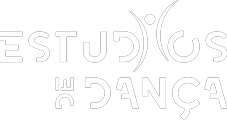Encontro Internacional sobre a Cidade, o Corpo e o Som - TEPe2022
Internacional Meeting on the City, the Body and Sound- TEPe2022
Livro de abstracts / Booklet
Editores / Editors Daniel Tércio, Leonel Brum
Clique aqui para descarregar o pdf / Click here to download the pdf
Sumário
Os contextos pandémico e pós-pandémico vêm impondo às cidades outras dinâmicas, outros sons, outros ecos, outros percursos, outros visitantes humanos e não humanos. Durante o confinamento, o encerramento de espaços teatrais e expositivos – bem como, durante o desconfinamento, as limitações para a sua utilização - têm tido consequências penosas nas programações artísticas e efeitos dramáticos nos quotidianos dos seus agentes (artistas, técnicos, programadores, curadores, etc.). Ao mesmo tempo, a desaceleração da vida da cidade (do trânsito, do ritmo nas ruas, do frenesim produtivo e de consumo, etc.) veio contribuir beneficamente para uma diminuição das emissões de CO2. Neste quadro, a cidade - mais concretamente as suas zonas públicas a céu aberto – surgem mais nitidamente como espaços de circulação e de interferência (ou de suspensão de interferência) entre pessoas.
O que aprendemos com a experiência de confinamento e desconfinamento? Em primeiro lugar, que a cidade tem uma densidade flutuante, na medida em que as concentrações populacionais se esvaem quando nos encerramos em casa. Em segundo lugar, que o encontro com o outro (uma das prerrogativas da cidade) pode acontecer em outras escalas que não apenas a dimensão cultural. Em terceiro lugar, que o medo pode ser um sentimento público capaz de fazer implodir as próprias cidades, se não for transformado numa força para a vida.
Como é que, neste processo, os artistas se organizam e se constituem como agentes na cidade? Como é que a cidade passou a ser representada? Que cidade é aquela que desejamos? Este congresso surge assim da necessidade de intensificar o diálogo entre a cidade e a arte, em particular as artes performativas.
Este encontro efoi o culminar de dois anos de investigação consistente e consolidada no âmbito do projecto TEPe (Technologically Expanded Performance). Ao longo destes dois anos, desenvolvemos atividades com a comunidade com o intuito de promover um diálogo intercultural e transdisciplinar, e proporcionar o encontro com vivências urbanas variadas. Através das diferentes propostas de percursos pela cidade, mapeámos acontecimentos, hoje invisíveis, mas ainda assim presentes: desde “memórias soterradas” a “caminhadas sensoriais”, passando por registos íntimos de confinamento.
O encontro visou partilhar as experiências realizadas com a contribuição de duas equipas: a portuguesa, em Lisboa, e a brasileira, em Fortaleza. Para além de apresentarmos as conclusões das pesquisas realizadas, lançamos esta chamada para apresentações, especialmente destinada a artistas e estudiosos de performance art, historiadores das cidades, antropólogos, urbanistas, geógrafos, estudiosos da escuta e do som e a todxs aquelxs a quem interessa pensar (e projectar) a vida na cidade.
---
Abstract
The pandemic and post-pandemic contexts have imposed on cities other dynamics, other sounds, other echoes, other routes, other human and non-human visitors. During the lockdown, the closure of theatrical and exhibition spaces - as well as, during lockdown unlocking, the limitations for their use - have had painful consequences in artistic programming and dramatic effects in the daily lives of its agents (artists, technicians, programmers, curators, etc.). At the same time, the slowing down of city life (traffic, the pace of the streets, the frenzy of production and consumption, etc.) has made a beneficial contribution to a reduction in CO2 emissions. In this context, the city - and more specifically its open-air public areas - emerge more clearly as spaces for circulation and interference (or suspension of interference) between people.
What have we learned from the experience of national lockdown and unlocking? Firstly, that the city has a fluctuating density, insofar as population concentrations fade when we shut ourselves indoors. Secondly, the encounter with the other (one of the prerogatives of the city) can take place on other scales than the cultural dimension alone. Thirdly, fear can be a public sentiment capable of imploding cities themselves if it is not transformed into a force for life.
How, in this process, are artists organised and constituted as agents in the city? How did the city come to be represented? What kind of city do we want? This congress thus arises from the need to intensify the dialogue between the city and art, particularly the performing arts.
This international meeting is the culmination of two years of consistent and consolidated research within the TEPe (Technologically Expanded Performance) project. Throughout these two years, we have developed activities with the community to promote intercultural and transdisciplinary dialogue and provide an encounter with varied urban experiences. Through the different proposals of walks through the city, we have mapped events, today invisible, but still present: from "buried memories" to "sensorial walks", passing through intimate records of confinement.
The meeting aims to share the experiences carried out with the contribution of two teams: the Portuguese, in Lisbon, and the Brazilian, in Fortaleza. Besides presenting the conclusions of the researches carried out, we launch this call for presentations, especially addressed to artists and scholars of performance art, historians of cities, anthropologists, urban planners, geographers, scholars of listening and sound and to all those who are interested in thinking (and projecting) life in the city.
Historia/History
- Publicado 8 Março, 2022 / Published: March 8th, 2022
- Universidade de Lisboa
